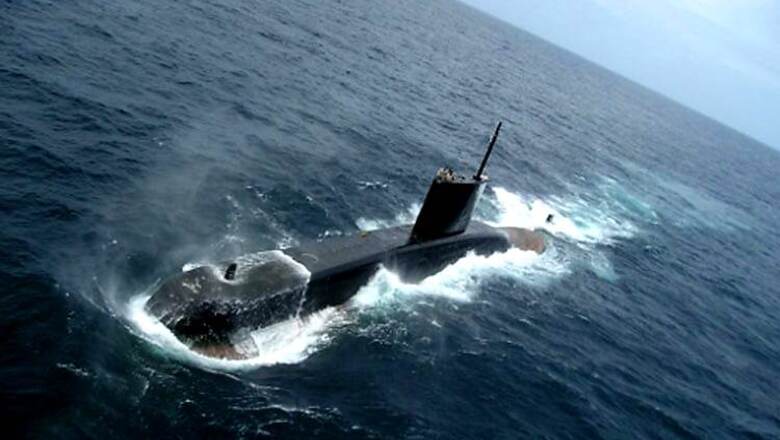
views
The Navy will on Friday formally induct four types of indigenously developed sonars that will boost the force's underwater surveillance capability.
The systems to be inducted include Abhay - compact hull mounted sonar for shallow water crafts, Humsa UG - upgrade for the Humsa sonar system, NACS - Near-field Acoustic Characterisation System, and AIDSS - Advanced Indigenous Distress sonar system for submarines.
The systems have been designed and developed by NPOL, a Kochi based laboratory of DRDO.
Abhay is an advanced active-cum-passive integrated sonar system designed and developed for the smaller platforms such as shallow water crafts and coastal surveillance/patrol vessels.
It is capable of detecting, localizing, classifying and tracking sub-surface and surface targets in both its active and passive modes of operation.
The prototype of this compact sonar installed onboard a nominated naval platform has successfully completed all user evaluation trials to demonstrate the features as per the Naval Staff Qualification Requirements.
Indian Navy has proposed to induct this SONAR on three of the Abhay class ships.
Intensifying the command over the high seas is the Humsa -UG that is designed for upgrading the existing Humsa sonar system.
This system is proposed to be installed on seven ships of three different classes of ships, a statement by the Defence Ministry said.
AIDSS, a distress sonar is an Emergency Sound Signaling Device which is used to indicate that a submarine is in distress and enable quick rescue and salvage.
It is a life-saving alarm system designed to transmit sonar signals of a pre-designated frequency and pulse shape in an emergency situation from a submarine for long period, so as to attract the attention of passive sonars of ships or submarines in the vicinity and all types of standard rescue vessels in operation.
It is also provided with a transponder capability. With the induction of these four systems, the underwater surveillance capability of the Indian Navy will get a boost, besides providing a fillip to the quest for self-reliance in this critical area of technology, the statement said.

















Comments
0 comment